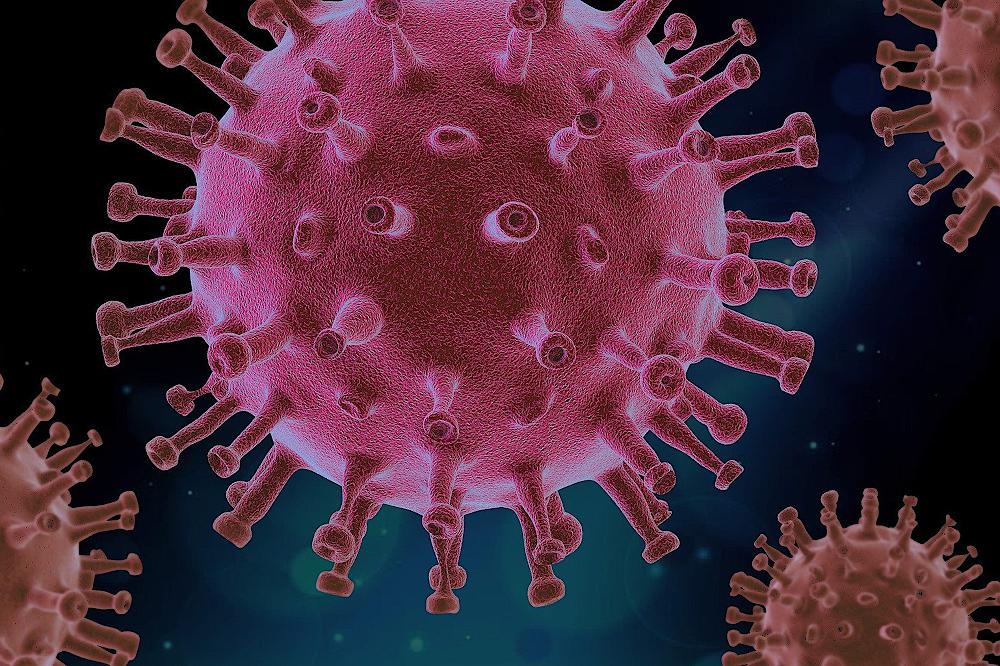
As bugs and viruses become more prevalent in the winter, now is a great time to take preventative measures against spreading and catching germs.
A 2017 Infection, Disease & Health study revealed that viruses could be transmitted and contracted from soiled linen. Additionally, a 2020 survey conducted by Hammonds Furniture found that a third of Brits only wash their bedding once a year.
Sleep experts at Bed Kingdom have revealed the potential dangers of certain microbes, allergens and bugs that can be found on bedding, as well as outlining the best ways to kill and prevent the spread of germs in the bedroom.
How long can microbes live on my bed sheets?
Germs can appear in your bed from various household items such as towels, toilets, kitchen surfaces and pets. Improper and infrequent laundering can lead to the spread of germs in your bedding. Below are some common microbial species that can live in your bed and how long they can survive:
Influenza viruses- Can survive for 8-12 hours on tissues and fabrics
These viruses cause the flu. Symptoms include a sudden high temperature, body aches, headache, tiredness, and a loss of appetite.
Staphylococcus aureus – Can survive for one week on cotton sheets
This bacterium is known to cause skin and soft tissue infections such as abscesses and cellulitis. Pneumonia or bone infections can occur in severe cases that infect the bloodstream.
Candida albicans – Can survive for up to a month
These fungal species are known to cause oral thrush, urinary tract infections and yeast infections.
What kind of bugs might I find in my bed sheets?
We lose a lot of fluid and bodily oils each night as we sweat in our sleep, not to mention the shedding of thousands of dead skin cells every hour. This environment is the perfect breeding ground for dust mites and bedbugs.
Dust mites
Dust mites feed on dead skin cells, which are plentiful inside a bed that is slept in for an average of six to eight hours a night. Although they are not visible to the naked eye, they multiply rapidly without being detected. Tens of thousands of dust mites can live in your bedding at any given point. The faecal matter and dead bodies of dust mites can cause severe allergic reactions in some people. Symptoms may include coughing, sneezing, skin rashes, itchy eyes, and a runny nose. Dust mites are also a very common trigger for asthma sufferers. Even if you’re not an asthma or allergy sufferer, you may experience cold symptoms such as a stuffy nose and sneezing after a night’s sleep if your sheets aren’t clean.
Bedbugs
Bedbugs can also be present on your bed sheets after being carried inside the house via clothes, backpacks, or other family members. Bedbugs are a common household pest in the UK, especially in cities. Warning signs of having bedbugs are small and raised itchy spots on the skin, spots of blood on your bedding, and small brown spots on bedding (bedbug excrement).
How can I get rid of germs on my bedding?
To kill the germs completely, it is best to use hot water and wash the bedding at the hottest temperature recommended on the label. It is recommended to wash soiled bedding separately from other washing as the germs can actually pass through the washing process.
The best way to sanitize dirty bedding is to strip the entire bed of sheets and pillowcases, keeping it away from your face as much as possible, and place it in the washing machine. The hotter the water, the more bacteria, viruses, and allergens you remove, so make sure to wash at the highest temperature your bedding allows for. To further kill organisms in your bedding, you can try the following additions to your load:
- Hydrogen peroxide – Unlike chlorine bleach, hydrogen peroxide is safe for most fabrics and dyes. Add 200ml of this antiseptic oxidizer to your wash. Note: you should still spot-test to ensure it doesn’t cause discolouration.
- Bleach – Add 100ml once the wash cycle has started. You should use colour-safe bleach for any dyed fabrics and chlorine bleach for white bedding.
- Borax – Add 100ml to your wash. Borax does all kinds of good things for your laundry. It increases stain removal, neutralizes odours, and disinfects extremely well.
How can I keep my bed sheets clean between washes?
You can keep your sheets from becoming dirty between washes by:
- Not eating in bed
- Clean dirty bags and other outdoor wear
- Keeping pets off the bed
- Shower before bed
- Remove makeup before bed
- Remove dirty socks before getting into bed
How often should I wash my bed sheets?
It is recommended that you wash and change your bed sheets once a week or at most every other week. Once a week is a healthy balance between washing sheets regularly enough to avoid the build-up of bacteria, germs, and dirt without being so often that it becomes hard to fit into your routine. Still, many of us are guilty of neglecting a regular sheet-washing schedule as it can feel like a chore when you are busy with work, children, or other daily tasks. There are, however, some factors that will warrant more frequent washing of bed sheets:
- If you have asthma and allergies - Wash every 2-3 days:
As mentioned above, tens of thousands of dust mites can live in your bedding at any given point. The faecal matter and dead bodies of dust mites can cause severe allergic reactions in some people. Symptoms may include coughing, sneezing, skin rashes, itchy eyes, and a runny nose. Dust mites are also a very common trigger for asthma sufferers. It is, therefore, beneficial to your comfort and health if bedding is washed more frequently.
- If your pet sleeps in your bed - Wash every 2-3 days:
Before getting into bed, it is a great idea to shower off any sweat from the day, therefore preventing bacteria from contaminating your sheets. Dogs, cats, and other pets do not bathe every day and can therefore carry even more bacteria onto our bedding than humans. Pets can pass on a fungal infection called ringworm of the scalp. Another issue with pets sleeping on your bed is the amount of fur they can shed. With all of this excess fur, skin cells and bacteria on your sheets, washing them more frequently if you sleep with pets is best.
- If you are ill – Wash daily:
Changing bed sheets daily is recommended for people who are ill. Obviously, this is not the most practical option for those who are bedridden; however, it is best to wash any germs and viruses away as often as possible.
- If you are prone to breakouts – Wash the pillow case every 2-3 days:
The oils and dead skin cells that are shed from our bodies cause pillowcases to become smelly and covered in bacteria and fungi. Those prone to breakouts may experience worsened acne from dirty pillowcases as the embedded dirt, dead skin, and bacteria can clog the pores.
- If you suspect bedbugs are present – contact your local pest control
It is challenging to irradicate bedbugs yourself, but there are some things you can do to help get rid of them. Wash the affected bedding and clothing on the hottest wash possible and tumble dry for at least 30 minutes. Make sure to clean your vacuum cleaner regularly, as bedbugs are often found there. If your clothes may be covered in bedbugs, consider placing clothes in a plastic bag and putting this in the freezer for three days.
A spokesperson from Bed Kingdom commented:
“As we move into the colder months, the home and bedroom will be subject to further cold and flu germs. To prevent the spread of these germs among family members and visitors to your home, it is essential to keep all bedding, towels, and clothes clean.
"If you, your partner or your child has been ill, toss your sheets into the wash immediately to kill any lingering germs. Viruses, such as those that cause flu, colds and stomach bugs, can linger on soft surfaces like bedding for up to 12 hours.”
Information provided by bedkingdom.co.uk


 Five Most Pet-Friendly Destinations in the UK
Five Most Pet-Friendly Destinations in the UK
 Five UK Valentine's Destinations Perfect For A Night Away
Five UK Valentine's Destinations Perfect For A Night Away
 Five Highly Romantic Meals Perfect for Your Valentine
Five Highly Romantic Meals Perfect for Your Valentine
 Five Fantasy Worlds We'd Love to See Become Theme Parks
Five Fantasy Worlds We'd Love to See Become Theme Parks
 Five Most Romantic Valentine’s Gestures From Europe
Five Most Romantic Valentine’s Gestures From Europe